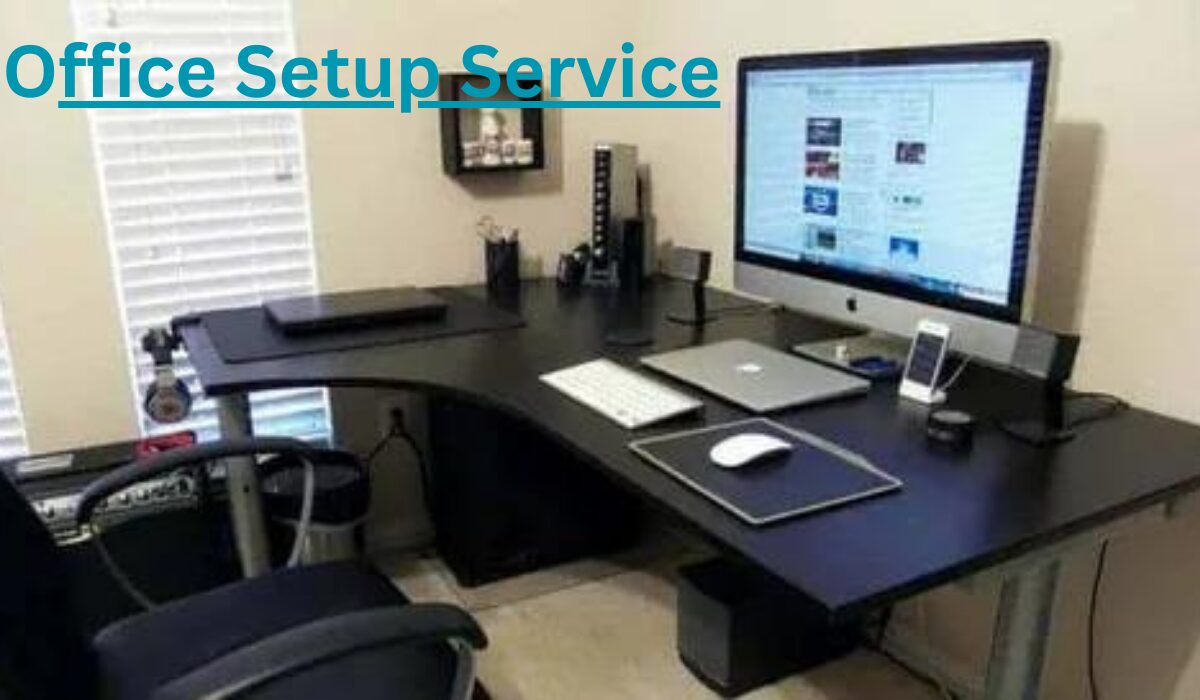Rapid technological breakthroughs and a move toward flexible, collaborative work settings have significantly changed the face of the modern office. These days, the foundation of any successful office space is an effective and well-designed IT system.
This thorough book examines the components of a contemporary office setup service, including security, hardware, software, and collaboration technologies that enable companies to prosper in the digital era.
Essentials of Modern Office IT Setup
Here are some essentials of a modern office IT setup:
- Hardware Setup:
- Electronic devices: Employee computers are the foundation of every business IT setup. Desktop computers, laptops, and increasingly mobile devices are essential parts. Selecting gadgets with adequate RAM, processing speed, and storage is necessary for smooth daily operations.
- Infrastructure for Networks: A robust network infrastructure is essential for modern offices. Wired connections, secure Wi-Fi networks, and high-speed internet access enhance a reliable and effective digital workspace. Making quality router, switch, and firewall investments ensures a solid network base.
- Printing and scanning devices: Offices still need to be able to print and scan documents despite the shift to digital. Workflow is streamlined by multifunction printers that offer capabilities like wireless printing and cloud connectivity, in addition to high-quality printing and scanning.
- Program Solutions:
- Systems of Operation: The appropriate operating system is essential for IT configuration. The operating system—Windows, macOS, or Linux—should match the company’s software needs and its users’ tastes.
- Suites for Productivity: Productivity suites, such as Google Workspace and Microsoft 365, have become essential. They facilitate a productive and cooperative work environment by providing a range of apps for communication, collaboration, and document creation.
- Tools for Collaboration: Collaboration technologies are becoming increasingly crucial as remote work becomes more common. Regardless of physical location, collaboration, and communication are improved via video conferencing platforms, project management applications, and communication tools like Microsoft Teams or Slack.
- Software for Security: The current office setting places a high premium on cybersecurity. Firewalls, encryption software, and antivirus programs protect sensitive data. A strong security strategy must include regular upgrades and personnel training on cybersecurity best practices.
- Integration of Cloud:
- Cloud Data Storage: Data storage that is safe and readily available is provided by cloud storage services like Dropbox, Google Drive, and OneDrive. Cloud connection increases productivity and flexibility by facilitating easy file sharing, collaboration, and accessibility from any device.
- Software Utilized on the Cloud: Utilizing cloud-based software lessens reliance on regional servers. Scalability, remote application access, and automatic upgrades are features of cloud-based software solutions that help meet the changing demands of today’s workforce.
- Security Procedures:
- Endpoint Protection: It is critical to safeguard individual gadgets. Endpoint security solutions protect devices from ransomware, malware, and other cyber threats. These solutions include antivirus software and endpoint detection and response (EDR) capabilities.
- Intrusion detection systems and firewalls: Network security is an essential component of a contemporary IT setup. Network traffic is monitored and managed by firewalls and intrusion detection systems, which guard against unwanted access and possible security lapses.
- Encrypting Data: Sensitive data is further protected by encryption. Devices with full disk encryption and encrypted communication channels guarantee that data is safe from unwanted access even in the event of an intrusion.
- Patch management and routine updates: An essential security practice is updating all systems and software. Frequent patch management and upgrades assist in addressing vulnerabilities and safeguarding against
- Device Control and Assistance:
- MDM or mobile device management: The increasing number of mobile devices makes implementing MDM solutions imperative. With MDM, companies may remotely wipe data in the event of theft or loss, enforce policies, and manage and protect mobile devices.
- IT Support and Help Desk: Timely resolution of technical difficulties requires a responsive IT helpdesk. Workflow is efficient and seamless when employees have a straightforward way to report issues and get help.
- Tools for Remote Support: Having tools for remote help is essential as remote work becomes more common. Thanks to remote desktop solutions, IT teams can troubleshoot and fix problems without having physical access to the devices.
- Expandability and Prospectivity:
- Scalability of Infrastructure: To support business development, scalability must be considered while designing an IT infrastructure. Hardware and software scalability guarantees that the IT environment may change to meet changing requirements.
- Improvements in Technology: The secret to future-proofing the IT infrastructure is to keep up with technological changes. Frequent evaluations of the hardware and software guarantee that obsolete parts are changed, and the workplace maintains its technical competitiveness.
- Using New and Emerging Technology: Investigating cutting-edge technologies like automation, the Internet of Things (IoT), and artificial intelligence (AI) might yield creative ways to boost efficiency and productivity in the workplace.
- User Education and Acceptance:
- Programs for Employee Training: The personnel must be taught correctly to get the most out of the IT system. Frequent training sessions on new technologies, security best practices, and software usage guarantee that staff members are prepared to take full advantage of the resources available to them.
- Management of Change: Implementing new technology or modifying the IT environment significantly requires efficient change management. Support, training, and clear communication reduce resistance and promote a seamless adoption process during changes.
In summary:
A well-thought-out office setup service is necessary and a strategic advantage in the ever-changing world of modern offices. Every component, from solid security measures and user training to hardware infrastructure and software solutions, is essential to creating an innovative and effective work environment.
Businesses may successfully traverse the intricacies of the contemporary IT ecosystem and set themselves up for success in the rapidly changing digital landscape by adhering to the fundamentals covered in this extensive book.
